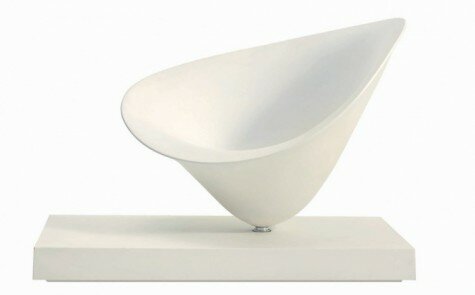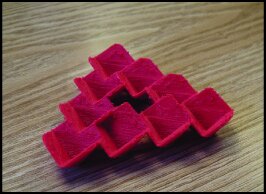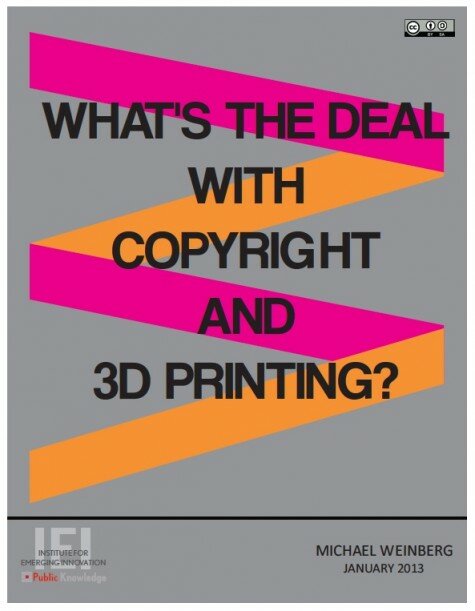
Philippe Starck Chair - yours for digital download?
Free whitepaper by Michael Weinberg investigates the future challenges of merging the digital with the real and concludes 3D printing does not pose a major threat to intellectual property.
“What’s the Deal with Copyright and 3D Printing” has been produced with the Institute for Emerging Innovation, and draws comparisons to how computers gave consumers the power to create and replicate movies, music and articles at home.
Whilst current 3D printing technology is expensive and not a high enough quality to replicate anything more than simple shapes in the home, history suggests it won’t be long before it might be possible to print an object, protected by copyright, in the home, with a digital file freely available on the web.
Last October, a patent was granted for a method of preventing people using 3D printers to pirate goods. Awarded to California-based Intellectual Ventures (established by former Microsoft technology boss Nathan Mhyrvold), the patent was for a copy management system that acts as a digital wrapper around the design files used by 3D printers. Before a printer starts producing an object, the copy-protection system checks permission has been given to produce it.
However, whilst there could be privacy issues in the future, Weinberg’s report suggests protection is already in place: “The good news is that, thus far, the system has been able to handle copyright-protected 3D printing-related content about as well as it handles everything else. While this might strike some as faint praise,at a minimum it suggests that the online copyright rules do not need to be rewritten just to accommodate the appearance of 3D printing on the scene. This system is governed by rules enacted as part of the Digital Millennium Copyright Act (DMCA). The core concept is fairly straightforward: websites that host content for others are not copyright experts. They are not courts or police. As such, forcing them to police their sites for copyright infringement is neither desirable nor tenable."

The whitepaper highlights the case of the “Penrose triangle”, an optical illusion designed by Ulrich Schwanitz. He uploaded his design to the website, Shapeways, that allows designers to sell 3D printed objects and invited the public to purchase a copy in the material of their choice. He also claimed that creating this design was a massive design achievement and refused to tell anyone else how he made the object.
Shortly thereafter another designer, Thingiverse user artur83, uploaded a Penrose triangle with the comment:
Inspired by Ulrich Schwanitz's 'challenge'
about the "Impossible Penrose Triangle"
I thought I'd give it a try.
Looks pretty neat.
Unlike Shapeways, the website Thingiverse is built around sharing design files. As a result, because it was now up on Thingiverse anyone could download the design, understand how it worked, and print out their own version at home.
Schwanitz did not appreciate artur83's behaviour and sent a request to Thingiverse that the model be removed. Thingiverse complied, but eventually public outcry convinced Schwanitz to dedicate his design to the public domain and retract the takedown request.
NEVER MISS A 3D PRINTING STORY. SIGN UP TO THE FREE WEEKLY E-MAIL SERVICE VIA RIGHT SIDE BAR
The whitepaper questions whether Schwanitz ever did own the copyright to the illusion and that as 3D printing and modelling grow in popularity, it is likely that we will see more companies and individuals assuming they have a copyright for a design or object and demanding removal of unauthorised versions. While most modern songs, movies, and pictures are protected by copyright, the same cannot be said for physical objects. For that reason, when a site receives a takedown request, Weinberg suggests it may be wise to at least consider if the object is protected by copyright in the first place.
Like music, this new world offers consumers to become designers for the first time, creating something in a CAD programme, attaching a value to the object, and charging for the instructions to replicate it on a 3D printer at home. And whilst the music industry struggled in the early days of the digital revolution, they now embrace the low cost distribution methods, with millions choosing to pay for downloads rather than steal them – it is not unreasonable to expect a similar situation for 3D printing.
FREE WEEKLY 3D NEWS BULLETIN –
























